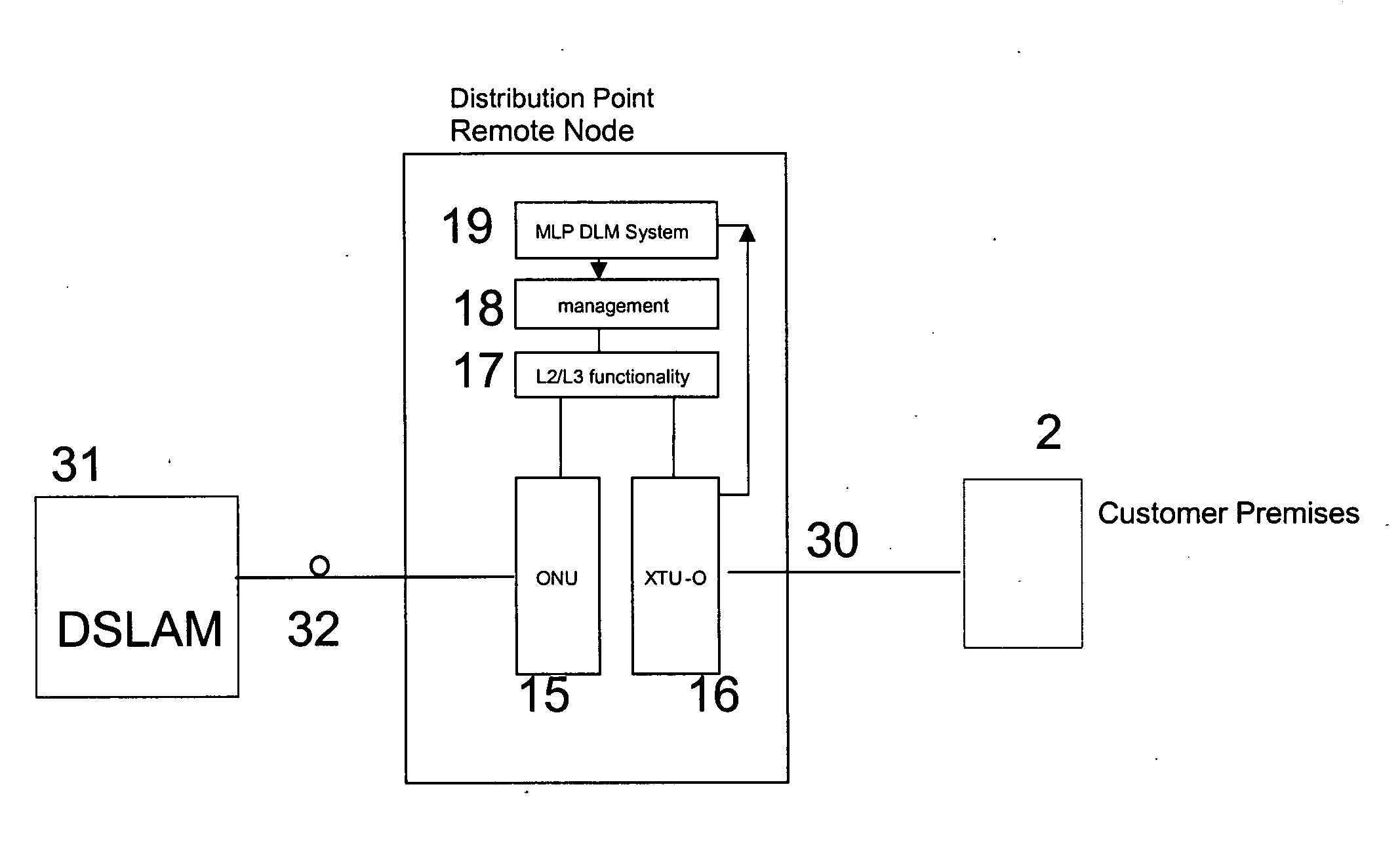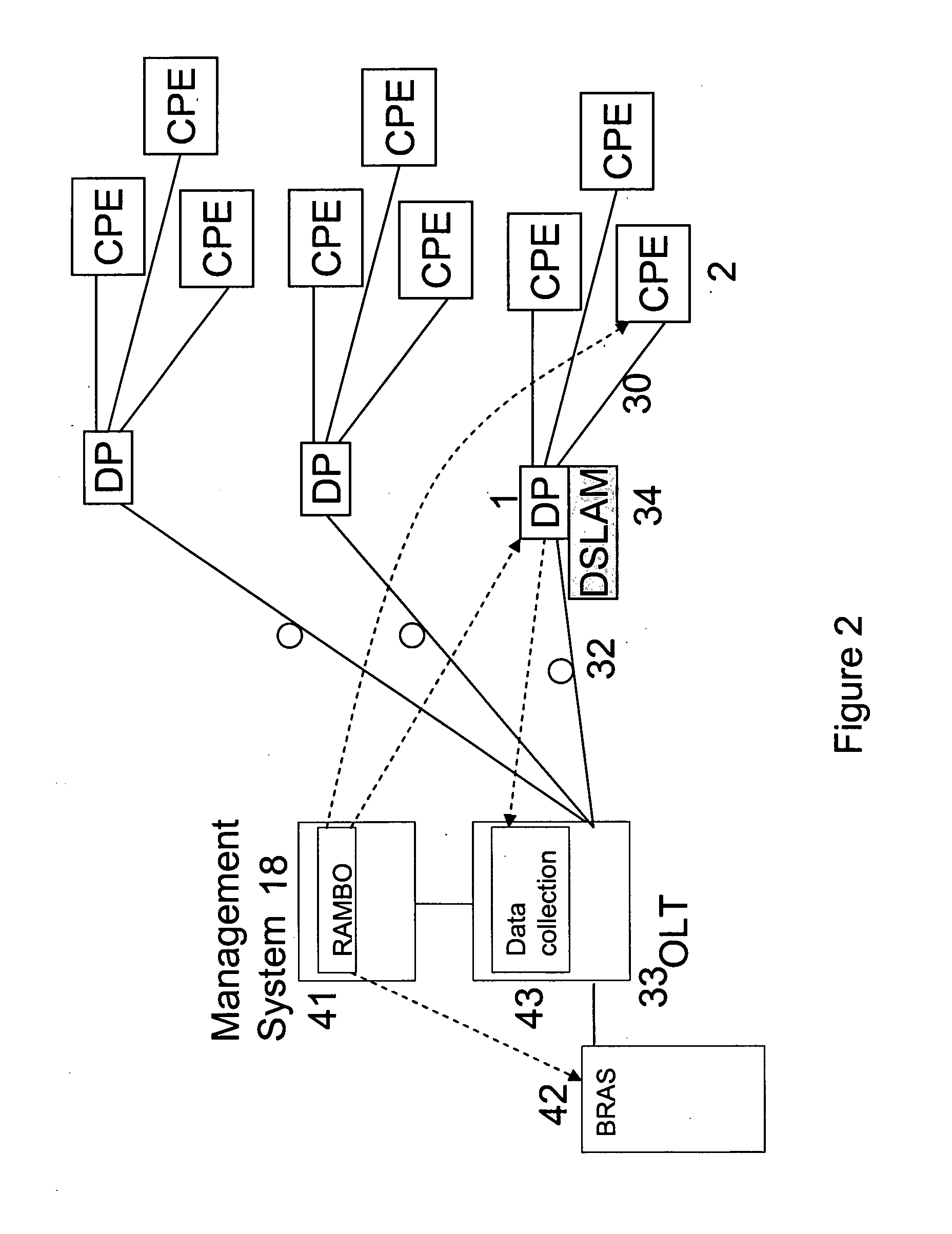Management of telecommunications connections
a technology of telecommunications connections and management equipment, applied in the field of telecommunications systems, can solve the problems of impracticality of powering the distribution points from the exchange side, and achieve the effect of retaining system stability and minimizing power consumption
- Summary
- Abstract
- Description
- Claims
- Application Information
AI Technical Summary
Benefits of technology
Problems solved by technology
Method used
Image
Examples
Embodiment Construction
[0026]It should be understood that FIGS. 3 to 5 illustrate the functional elements of the system, which may in practice be embodied in one or more electronic components or in software.
[0027]FIG. 3 illustrates the configuration of the system, and by comparison with FIG. 2 the modifications made according to the invention can be understood. The principal difference is that the Rate Adaptive Management Box (RAMBo) 41 has been migrated from the management system 18 associated with the optical line termination 33 in the exchange to the distribution point 1. (It will be understood that each distribution point can be similarly equipped). The data collection and processing functions controlling the data rate to be used over the DSL link 30 can therefore be performed at one end of that link. Thus, instead of measurement data sent from the DP 1 to the RAMBo 41 in an exchange-based management system 18, and the resulting data rate required returned to the DP 1, the RAMBo 41 located in the DP 1...
PUM
 Login to View More
Login to View More Abstract
Description
Claims
Application Information
 Login to View More
Login to View More - R&D
- Intellectual Property
- Life Sciences
- Materials
- Tech Scout
- Unparalleled Data Quality
- Higher Quality Content
- 60% Fewer Hallucinations
Browse by: Latest US Patents, China's latest patents, Technical Efficacy Thesaurus, Application Domain, Technology Topic, Popular Technical Reports.
© 2025 PatSnap. All rights reserved.Legal|Privacy policy|Modern Slavery Act Transparency Statement|Sitemap|About US| Contact US: help@patsnap.com



